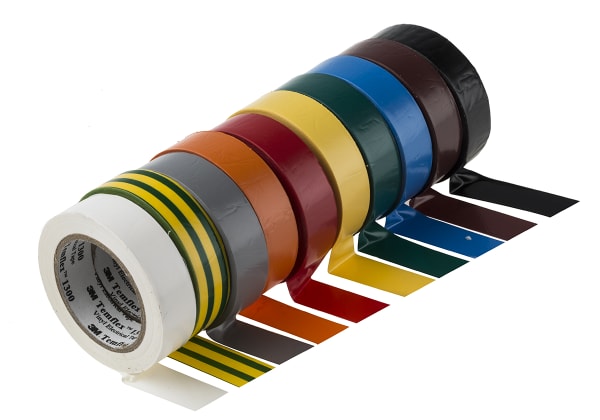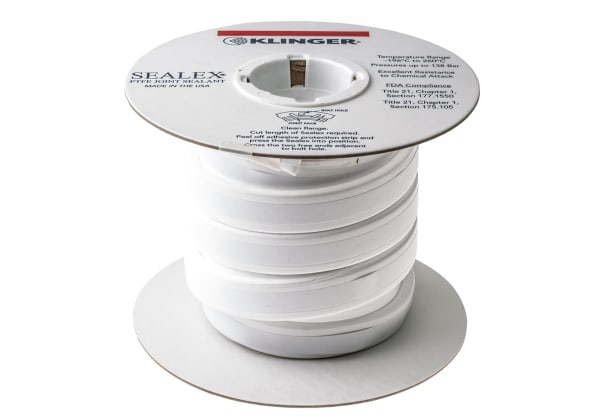- Published 17 Jan 2023
- Last Modified 7 Jun 2024
- 12 min
Gaffer Tape Guide
Discover the uses for gaffer tape and find out how to choose the right type of gaffer tape for your requirements.

Reviewed by David Carmichael, Solution Engineer (July 2021)
In this comprehensive guide, we will examine some of the main strengths of gaffer tape vs duct tape. We’ll also identify some of the most suitable tasks and environments for usage and discuss exactly which varieties are available for handling specific types of jobs.
What is Gaffer Tape?
A simple gaffer tape definition is that it is a widely used, superior-quality form of removable adhesive tape. It is also called gaffa, gaffer's, or gaff tape.
Several unique factors contribute to gaffer tape's enduring popularity as a leading adhesive product. Generally speaking, it is prized by professionals and hobbyists alike as a good value adhesive product with a reputation for performing extremely reliably across a broad array of demanding, heavy-duty applications.
Gaffer Tape vs Duct Tape
When comparing gaffer tape to other widely used heavy-duty tape products, the most common variety for side-by-side comparison is duct tape. The two tapes often look quite similar at first glance, and they are frequently considered for use in similar environments. However, they’re quite different products, and each type has its pros and cons for specific applications.
Comparison of duct tape vs gaffer tape can be quite important. Many people wonder, "is gaffer tape the same as duct tape?" or "is duct tape the same as gaffer tape?" However, the main difference between duct tape and gaffer tape is in their construction and material composition, as explained below:
Gaffer Tape
- Primarily cloth-based, meaning it incorporates a tough, tight-woven fabric mesh as its main structural material
- This will then be augmented and enhanced with various additional compounds and coatings, depending on the specific variant of gaffer tape
- Typically backed by a higher-quality synthetic rubber adhesive
Duct Tape
- Generally cheaper and less robust
- Plastic or vinyl-based, prioritising water resistance over structural robustness
- Doesn’t perform as well as gaffer tape when subjected to mechanical stresses or warmer temperatures
- Typically uses a less advanced, more aggressive adhesive, meaning it sticks very well to an extensive range of surfaces but will usually leave a far messier residue when removed and can damage some surfaces
The gaffer tape duct tape difference is significant in terms of material, adhesive quality, and suitability for specific applications. The difference between gaffer tape and duct tape can also affect the outcome of your project, depending on whether you need durability or water resistance. Therefore, understanding the difference between duct and gaffer tape ensures you choose the right product for your needs.
So, next time you hear someone asking, ‘is gaffer tape duct tape?’, you can tell them exactly why the answer is a definitive ‘no’!
What are the Different Types of Gaffer Tape?
Different types of gaffer tape are best suited to specific applications. If you’re looking to make a purchase but are still asking ‘what type of gaffer tape should I buy?’ then it always helps to know the specifics of each type to choose the best gaffer tape for your application.
The following table clearly illustrates the benefits and main uses of the different types of gaffer tape:
Product Type | Benefits | Applications |
|---|---|---|
| Coloured gaffer tape | Great for various specialist applicationsIdeal for easy identification purposesLighter shades allow for easy marking or labelling | Colour coding wires and cablesStage prop spikingSafety marking in industrial settings |
| Waterproof gaffer tape | Designed for temporary adhesionMatt versions prevent light reflection | Suitable for moist or humid environments |
| Clear gaffer tape | Flexible and conformableIdeal for discreet applications | Ideal for splicing fabrics and carpets where joining |
| Gloss gaffer tape | Excellent durabilityFlexible and easy to use | Well-suited to a wide range of applications including domestic, industrial, and signage |
| Matt gaffer tape | Ideal for areas of low-light reflectionPossibility to label the surface of the tape | Ideal for use in the entertainment industries including film and TV, and photography |
| Heavy-duty gaffer tape | Highly suitable for sealing, wrapping, and repairGreater flexibility than alternative tape types | Ideal for industrial applications |
Here are some of the different types of gaffer tape explained in greater detail:
Cloth Gaffer Tape
Almost all gaffer tapes are cloth-based. A heavy-duty cloth backing material is a fundamental aspect of what defines a product as true gaffer tape, unlike some of the many other industrial tape varieties (duct tape, for example). While it’s not uncommon to hear people refer to gaffer’s cloth tape or similar, it’s generally understood that all such products will be constructed from a robust fabric material, with a high-quality adhesive backing on one side.
Standard gaffer tape is almost always a variety of cloth tape. It’s typically made from rugged, tight-woven fabric webbing, which is then coated with various synthetic materials and compounds to enhance its overall durability.
Matte Gaffer Tape
Matte gaffer tape is one of the most effective varieties for disguising unsightly cabling and wire runs that you don’t want to be easily visible from a distance. This is often one of the main reasons why matte gaffer tape is preferred in applications such as film and stage work.
The fact that most gaffer tape doesn’t reflect light very well when coated with a dull surface texture means that it's hidden from view more effectively. Matte black gaffer tape is especially useful in darkened environments, where nearby lighting setups might otherwise reflect off the surface of shinier products and thus be more obvious to onlookers.
Gloss Gaffer Tape
Although gaffer tape matte finishes are usually the more popular varieties, gloss gaffer tape is also available. This tends to be used when the opposite effect is required, i.e. when it’s helpful to have the precise location of any secured cables or other components highlighted.
This is typically done for safety reasons, especially in locations where reduced light and visibility is more of a potential hazard than an aesthetic bonus. Indeed, various types of reflective or even fluorescent gaffer tape are also available for a more pronounced highlighting effect in similar scenarios.
Coloured Gaffer Tape
Coloured gaffer tape is another widely available alternative which can come in handy for numerous reasons. In particular, many buyers may prefer a specific colour of gaffer tape to blend it into its surroundings more easily. For example, brown gaffer tape might be a better option for hiding cables on a wooden stage. In contrast, green, blue, or red gaffer tape will be a popular choice for sporting or other outdoor events.
Different coloured tape can also be used to differentiate between multiple stuck-down cables, components, or other items. Additionally, it can be used for quick-reference adhesive labelling and identification purposes. While coloured options are generally less popular than standard white or black gaffer tape, some examples of alternative colours you may come across include silver, yellow, green, red, and brown. Lighter colour choices also make it easier to write on the tape.
Clear gaffer tape is also an effective option in some situations, especially when it’s imperative to identify a specific wire or component quickly.
Waterproof Gaffer Tape
Is gaffer tape waterproof? Most gaffer tape is water-resistant rather than waterproof. Being cloth-based, it’s not completely immune to the effects of water and dampness in the immediate environment - this includes rain, spillages, and potentially even high humidity levels.
While the majority of gaffer tapes are coated with various compounds that boost performance in the presence of moisture, there are generally better choices out there if protecting against wetness is your primary objective when choosing an adhesive tape product.
What is Gaffer Tape Used for?
One of the most familiar gaffer tape uses is temporarily holding down and securing cables to walls or floors. Gaffer tape used on wiring runs generally serves a dual purpose, both reducing the visibility of trailing cables and helping to minimise the risk of hazardous tripping or snagging.
You’re likely to find this sort of tape in near-constant use around film and TV sets, music stages, rehearsal or performance spaces, and in pretty much any other environment where electrical cabling needs to be fixed firmly and safely in place for a limited time and then removed later on. Certain brands might be labelled specifically as theatre gaffer tape or photography gaffer tape, but in essence, the chances are that they’re largely suitable for a wide range of purposes, provided you choose a suitable width, length, colour etc for the task at hand.
However, it should be noted that sticking down wires isn’t the only answer to the question ‘what is gaffer tape used for?’ This versatile tape is regularly put to all kinds of diverse uses, in all manner of challenging environments. Gaffer tape's unique strengths over many other temporary adhesive materials make it an ideal choice for short-term fixes across an impressive range of applications and materials.
How to Choose the Right Gaffer Tape
Understanding which type of gaffer tape you should buy comes down to the particular applications and environments you will use it in. Simply put, knowing how to choose gaffer tape means knowing what you'll do with it!
With that said, we’ve outlined a few considerations to remember when picking out the ideal gaffer tape for your specific needs.
Gaffer Tape by Length
25m and 50m gaffer tape rolls are typical lengths. However, it’s easy to cut a length from the roll to match the required size when using it.
One big advantage of gaffer tape is that its high-quality adhesive won’t cure or dry out easily. This means that any unused tape should remain usable for a long time, as long as you store it under the correct conditions.
Gaffer Tape by Backing Material
Nearly all varieties of gaffer tape are made from fabric and cloth. However, it's worth noting that certain products - generally those designed for very specific tasks and installation environments - may introduce different materials to the standard cloth-based format, while still being called gaffer tape.
One notable example is foil gaffer tape, which is backed by a thin, flexible, yet robust metallic sheet, unlike cloth gaffer tape. This type is generally intended for use in more extreme temperature ranges than standard gaffer tape.


